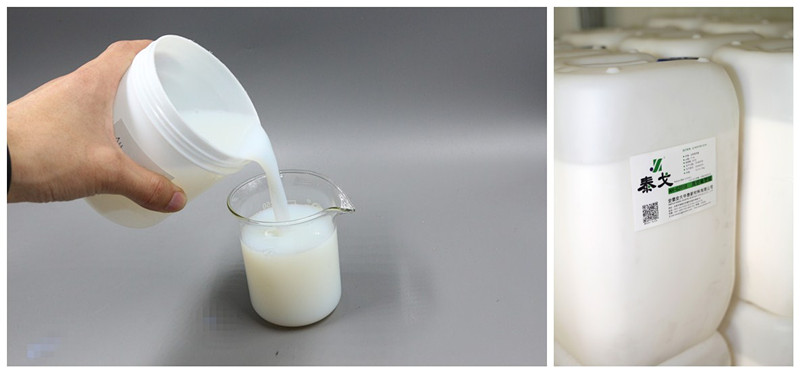Bonding theory of thermal activated polyurethane adhesive
The bonding principle of thermally activated water based polyurethane adhesive is summarized as follows:
Water based polyurethane adhesives based on polyester and other crystals are usually pre-coated and then dried to obtain a non-viscous surface.At this point, the modulus of the film is high, poor adhesion, heating to the activation temperature, crystallization state of the soft section melting, at this point, the film modulus is low, the film liquidity is good, strong permeability, viscosity and produce a bond.After the completion of bonding, the adhesive cooled down, the molten soft segment recrystallized rapidly, the modulus of the adhesive film increased again, and the adhesive during the melting showed the adhesive property.
After the removal of the pressure, the bonding process of crystalline polyester waterborne polyurethane adhesive is as follows:
(1) after thermal activation, the adhesive film immediately cools down: in a few seconds, the modulus of the adhesive film increases rapidly, and the adhesive substance can keep the adhesive state.
(2) soft segment crystallization of polyester: at this point, the modulus in the soft segment crystallization money to maintain a period of slow modulus conversion process, in the soft segment recrystallization began, the modulus increased rapidly twice, the viscosity fell rapidly, the adhesive was basically stuck, the process was completed in a few hours.
(3) aggregation formation of waterborne polyurethane films or cross-linking with polyisocyanates: this stage is a gradual process, which can only be completed in a few days.At this point, the molecular chains in the film use hydrogen bonds and other secondary bonds to form an aggregate structure with strong microcrystalline equivalent interaction force, or complete cross-linking with polyisocyanates to form a network structure, so as to achieve the required bond performance and temperature resistance.
Water based polyurethane adhesives based on polyester and other crystals are usually pre-coated and then dried to obtain a non-viscous surface.At this point, the modulus of the film is high, poor adhesion, heating to the activation temperature, crystallization state of the soft section melting, at this point, the film modulus is low, the film liquidity is good, strong permeability, viscosity and produce a bond.After the completion of bonding, the adhesive cooled down, the molten soft segment recrystallized rapidly, the modulus of the adhesive film increased again, and the adhesive during the melting showed the adhesive property.
After the removal of the pressure, the bonding process of crystalline polyester waterborne polyurethane adhesive is as follows:
(1) after thermal activation, the adhesive film immediately cools down: in a few seconds, the modulus of the adhesive film increases rapidly, and the adhesive substance can keep the adhesive state.
(2) soft segment crystallization of polyester: at this point, the modulus in the soft segment crystallization money to maintain a period of slow modulus conversion process, in the soft segment recrystallization began, the modulus increased rapidly twice, the viscosity fell rapidly, the adhesive was basically stuck, the process was completed in a few hours.
(3) aggregation formation of waterborne polyurethane films or cross-linking with polyisocyanates: this stage is a gradual process, which can only be completed in a few days.At this point, the molecular chains in the film use hydrogen bonds and other secondary bonds to form an aggregate structure with strong microcrystalline equivalent interaction force, or complete cross-linking with polyisocyanates to form a network structure, so as to achieve the required bond performance and temperature resistance.

From a theoretical point of view, the earlier bonding theories were mechanical ones, which were thought to be based on the micro-hole anchor effect and the irregularities of surface adhesion.Therefore, the surface properties of the adhesive and the surface properties of the substrate determine the adhesion between the two.Later adsorption theory takes bonding as a special interface property, and the polar group in the polyurethane chain is composed of carbamate bond, hydroxyl group, ether oxygen bond, cyanide bond, halogen atomic group and so on.These polar groups are easy to form dispersion force, which is an important component of adhesive cohesion.The diffusion theory of bonding is that it depends on the permeability of the adhesive and the bonding object.The "crawler" model can visually explain the viscosity of the polymer.The theory indicates that the high-branched polymer has better adhesion than the linear polymer.
Based on these classical theories, the following preliminary conclusions can be drawn: fabric surface treatment, increased wettability, increased molecular polarity of waterborne polyurethane and increased molecular branching degree are the key to improve the adhesion between coating and fabric.
Based on these classical theories, the following preliminary conclusions can be drawn: fabric surface treatment, increased wettability, increased molecular polarity of waterborne polyurethane and increased molecular branching degree are the key to improve the adhesion between coating and fabric.
For any requirements on water based polyurethane adhesive ,kindly contact us !
评论
发表评论